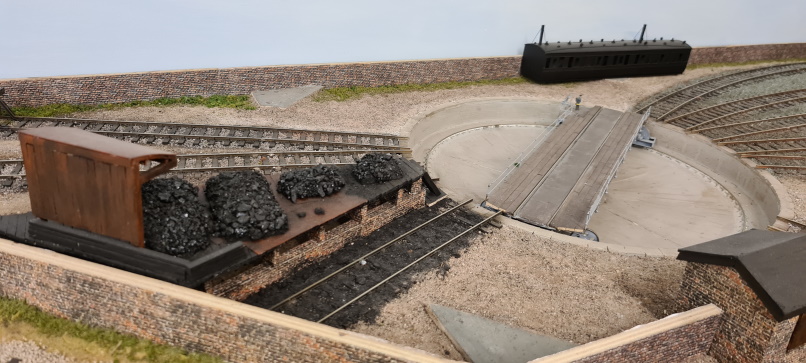The Leicester Model Railway Group's O Gauge layout Stacton Magna was started in 2001 and has been developed over the years to its current form.
The basic layout is a Passenger station with Goods facilities which connects with hidden storage sidings, a small goods yard with canal side facility, and a Zig Zag connection to private industrial sidings at a higher level.
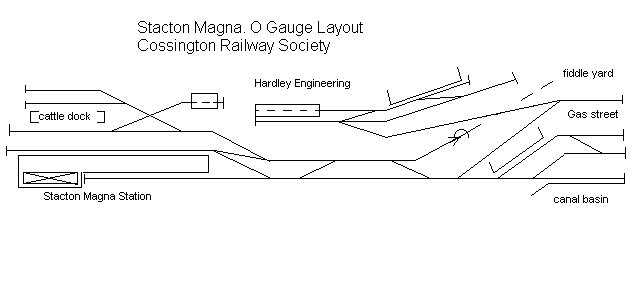
The history of the line supposed that the original Stacton branch was built to terminate at the canal-side facilities with a small platform (Gas Street) for passenger trains. At a later date, another branch railway was built from the opposite direction and terminated in the high-level private industrial sidings of Hardley Engineering.
The original branch line was further extended past the canal side facilities, tunnelling under the private sidings above, to connect with the new mainline. To avoid reversal of passenger trains, a new station with enlarged goods yard was located just before the new divergence. Also a link up to the high-level line was built in the narrow space behind the canal facilities.
As traffic directions changed and the original branches slowly became redundant, the lines beyond the station were closed. Passenger trains arrived and left via the tunnel connection to the mainline. Goods trains arrived at Stacton Magna, to be shunted to the canal basin, or up to the high-level sidings above. A local passenger service was provided from the bay platform to Gas Street.
The layout in this form was exhibited at our annual shows during the early 2000's.
Layout under construction 2002

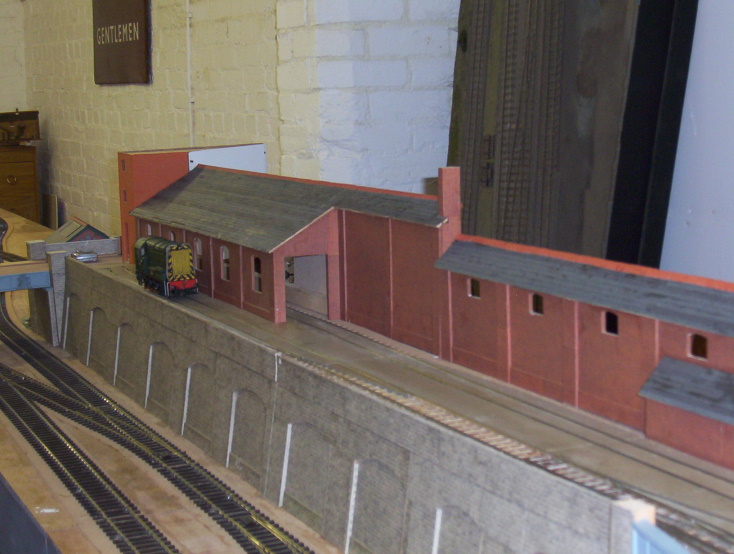
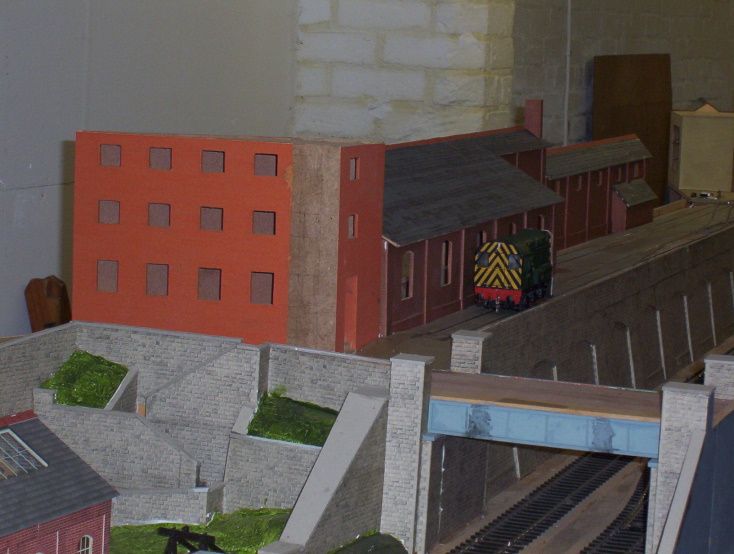
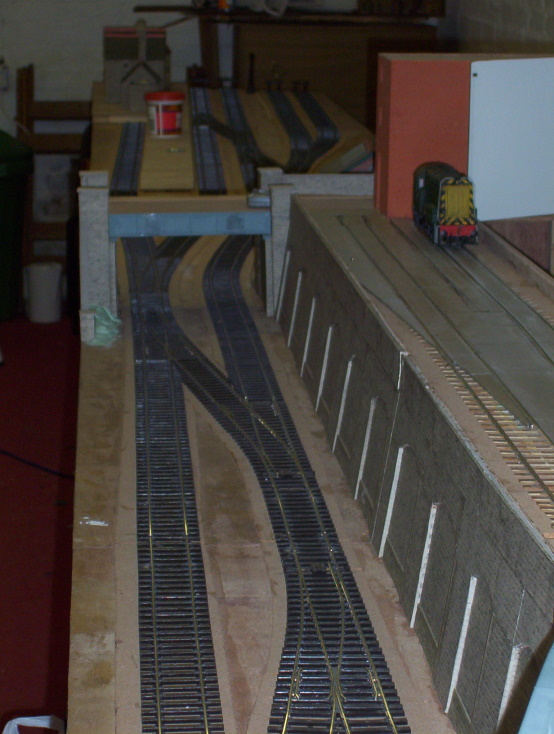
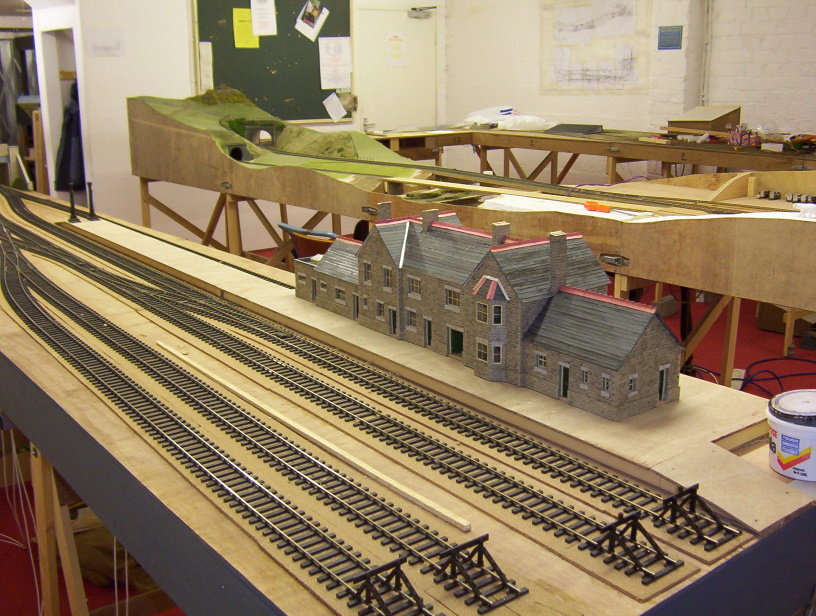

During construction Layout extended each end to include Station road and longer sidings in Canal Basin 2005
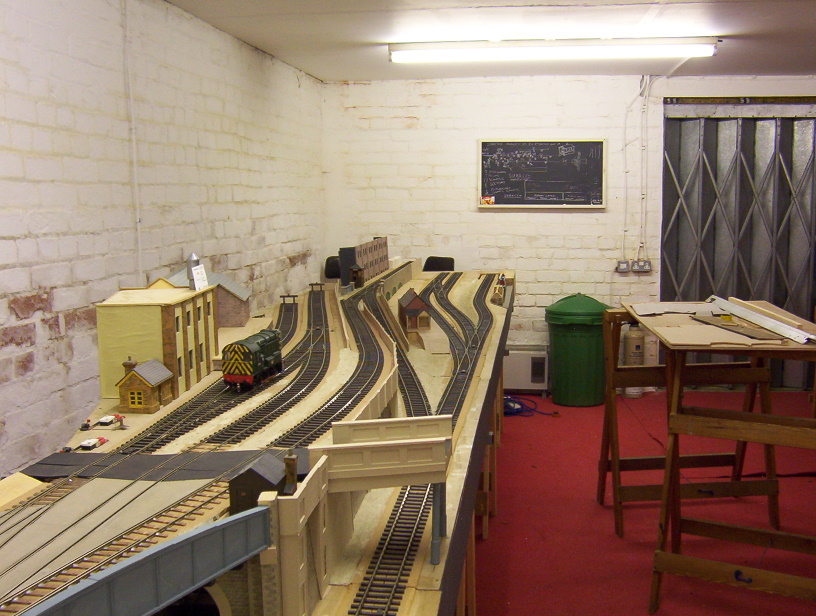
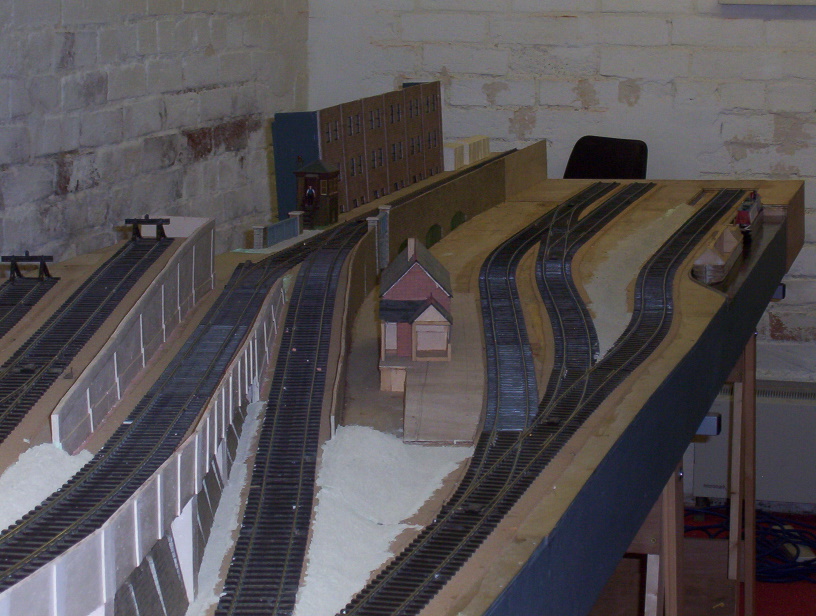
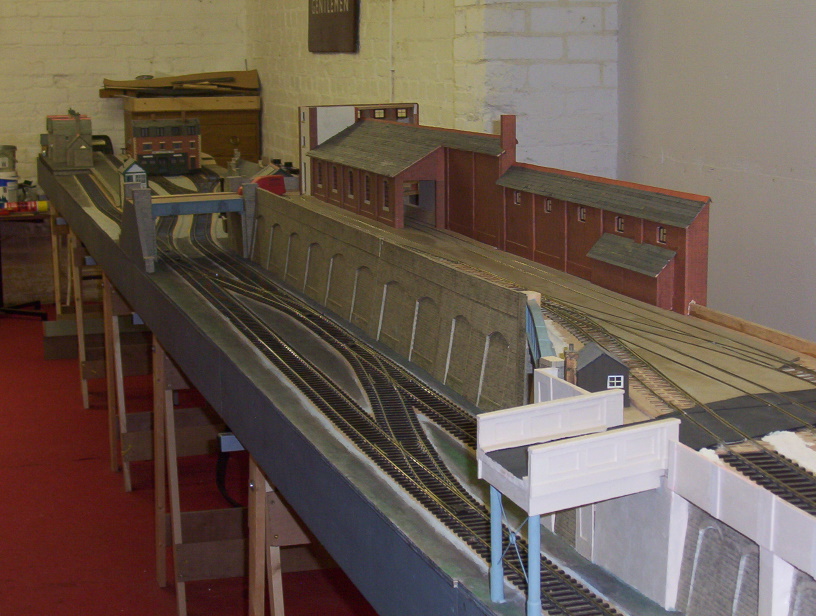
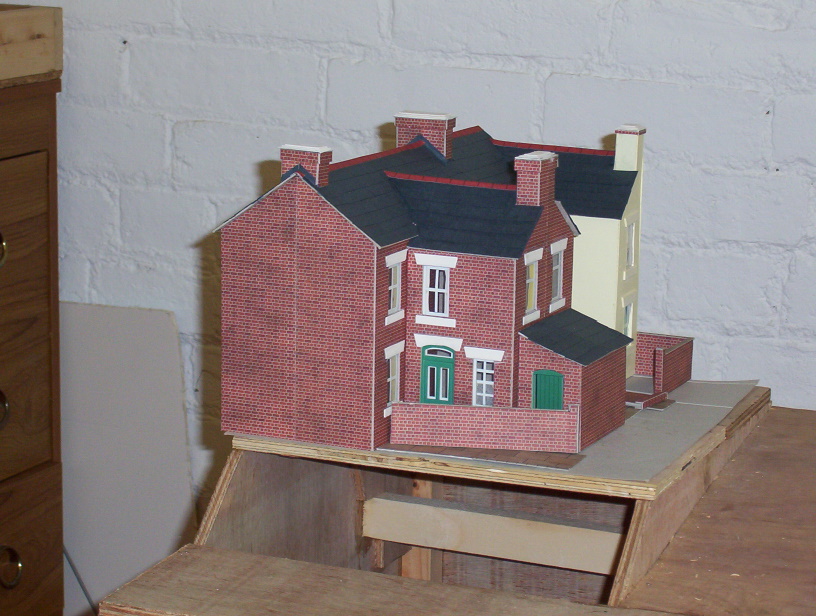
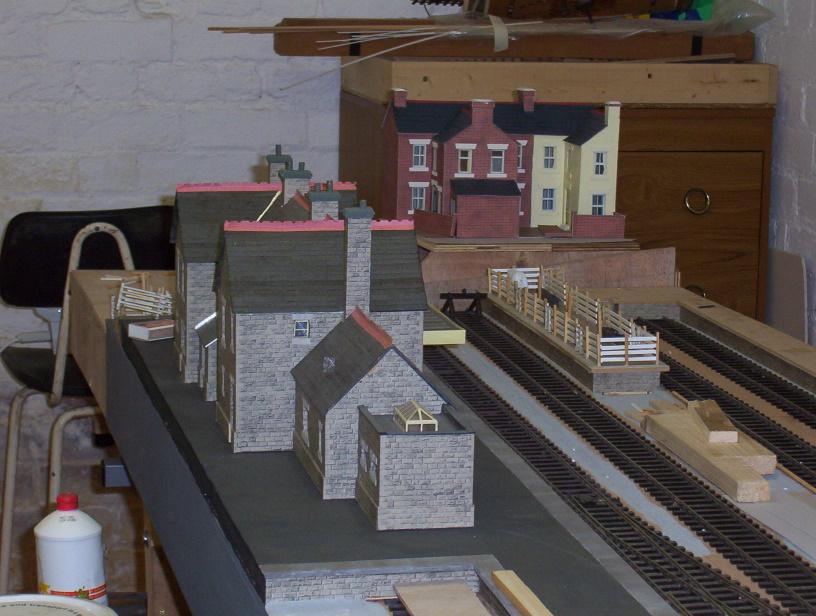
Scenic progression 2007
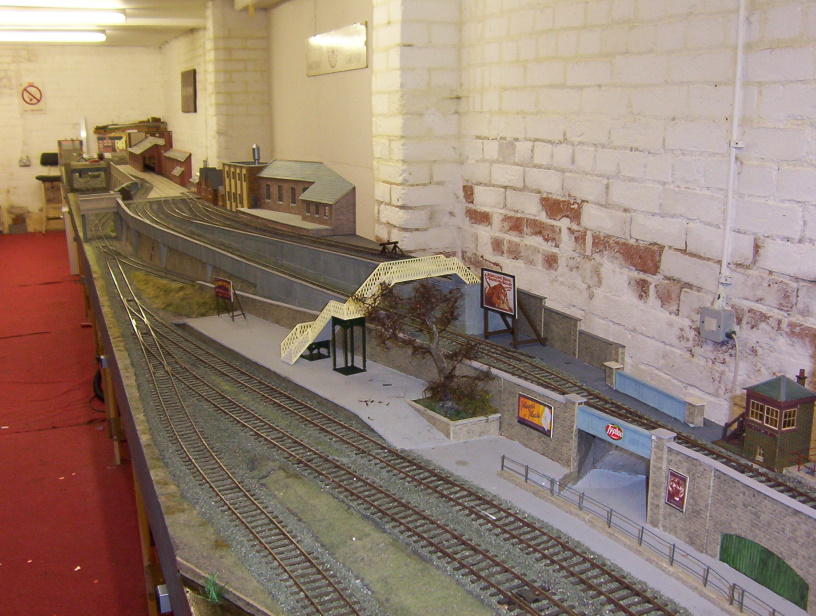
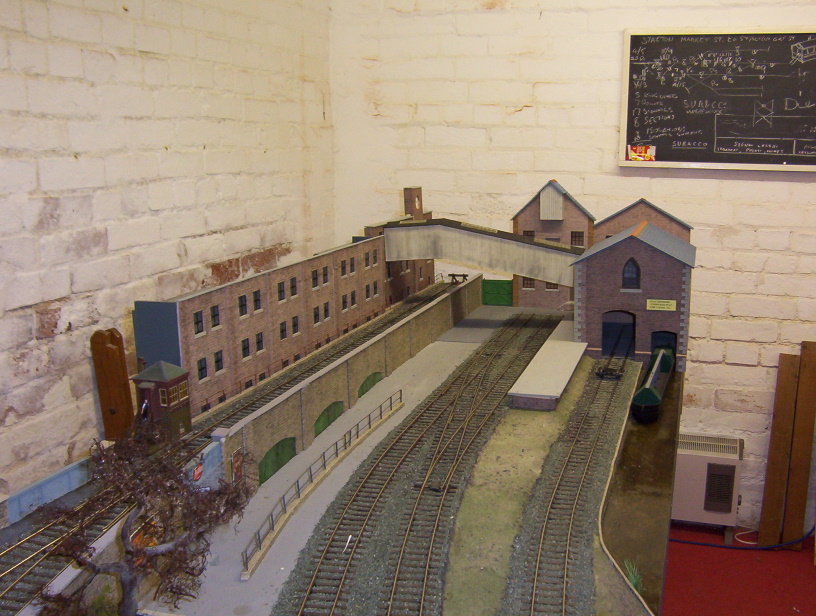
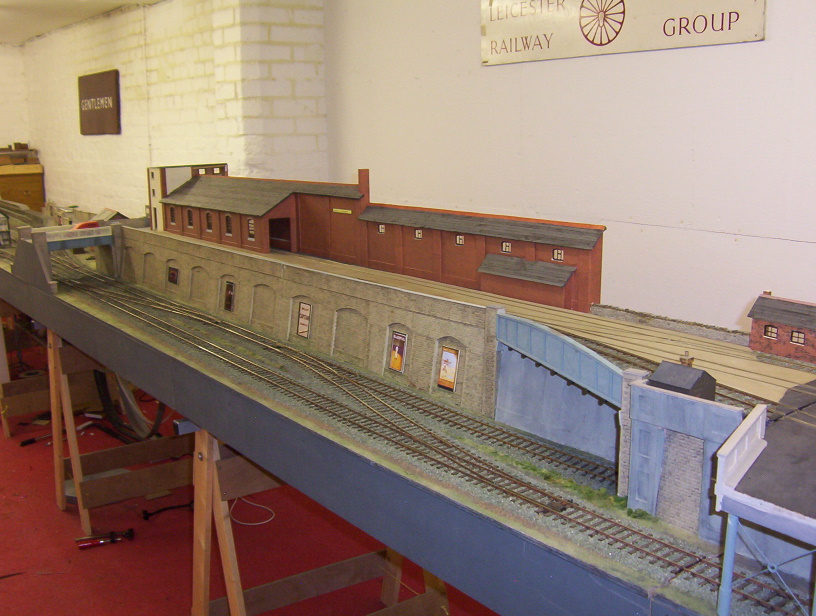
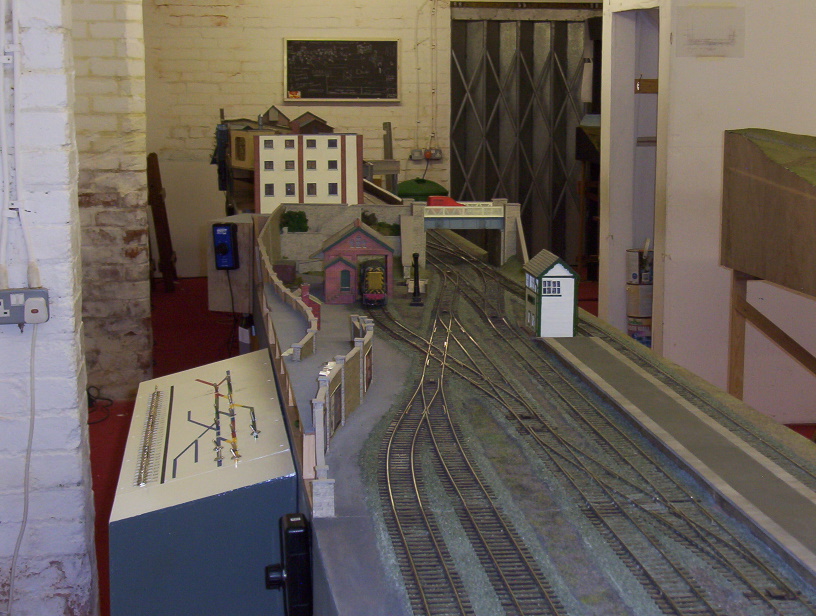
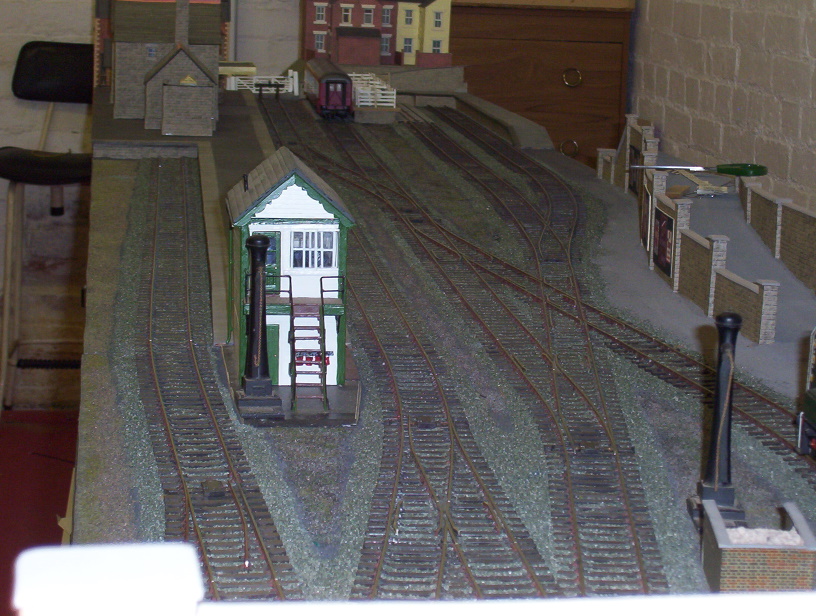
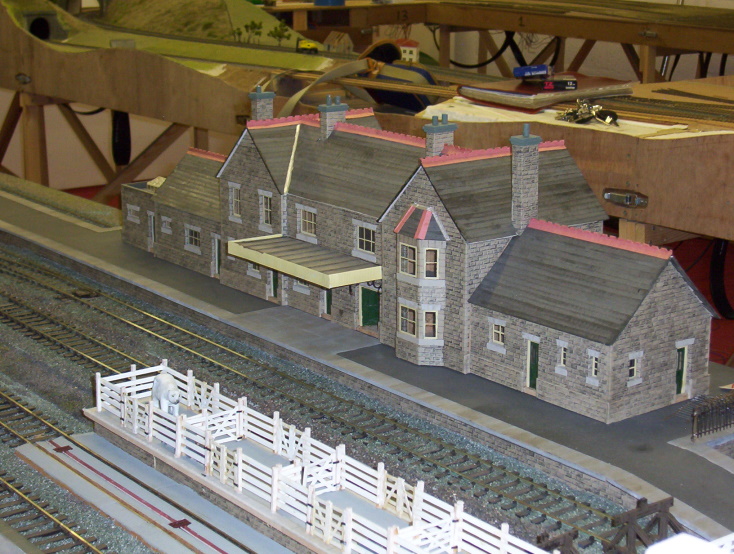
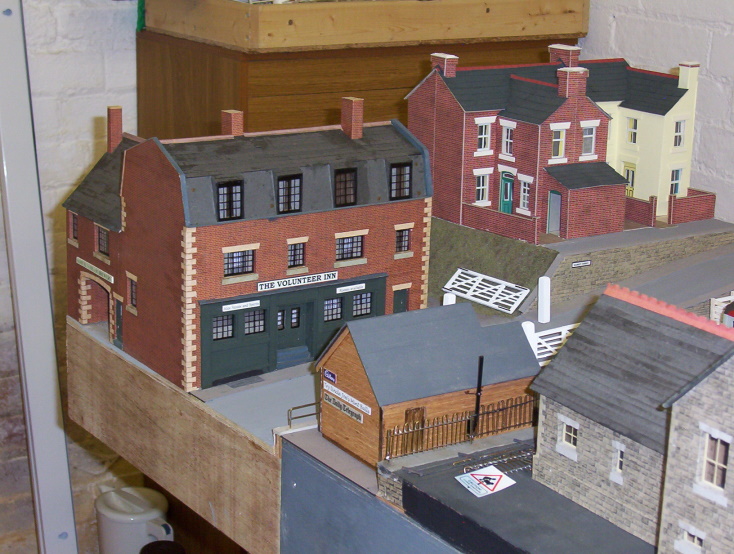
Exibition 2007
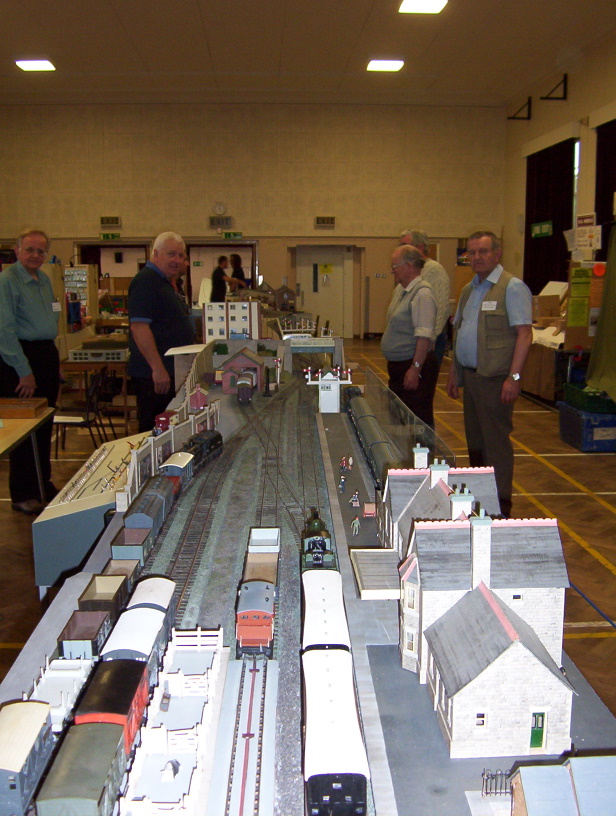
The first extension to the layout was to the line behind the canal basin, which was extended to connect to a new four road fiddle yard. This greatly increased the layout storage capacity for exhibitions and now trains arrived and left Stacton Magna in two directions. All trains reversing in the platforms or goods yard.
In the clubrooms, operation of the layout was from the rear, unfortunately the whitewashed barn walls were in poor condition and it was all to easy to ruin good clothing with white stains. It was agreed that the layout would be reversed, the front face to the wall and operation now from the outside.
It was found that by moving the layout sideways, we could connect the extended end with a curve which took the O gauge around the OO layout to the new fiddle sidings on the opposite wall. Very much a quart in a pint pot, this all came to a head when the OO layout reformed under new management.
Layout Extension 2011
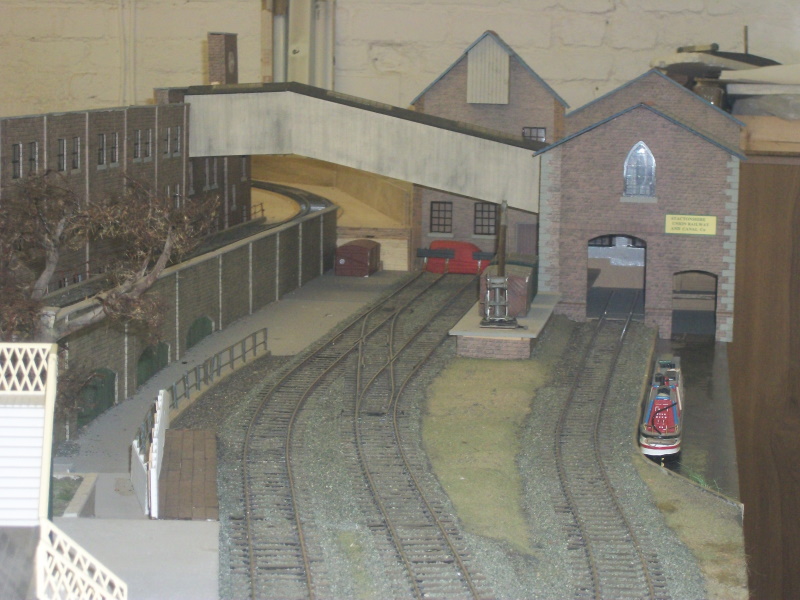
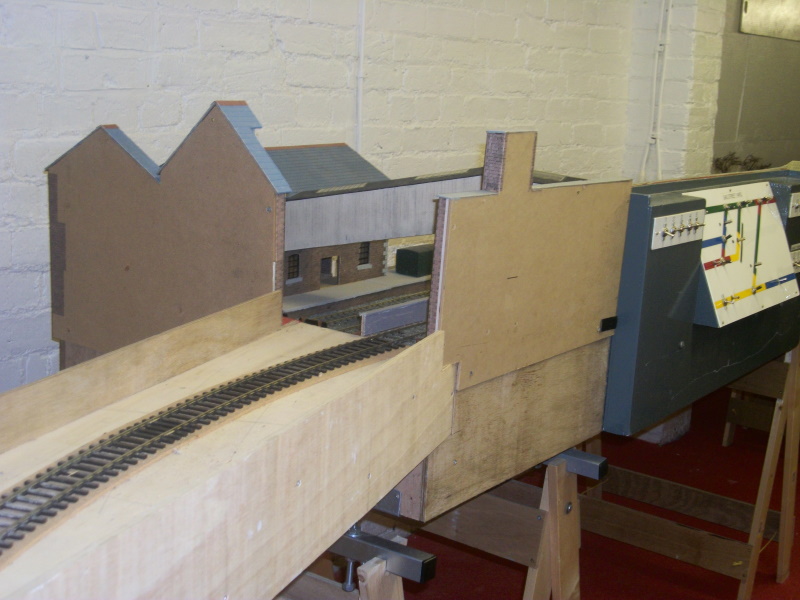
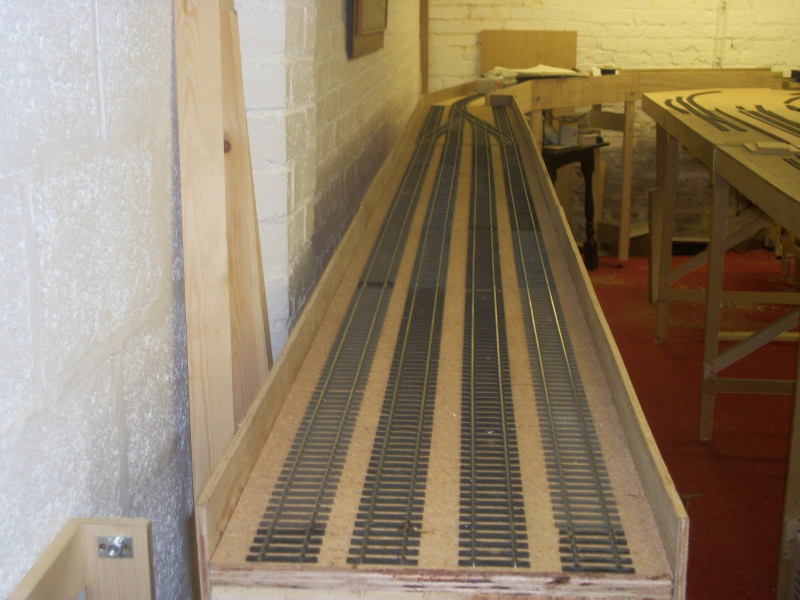
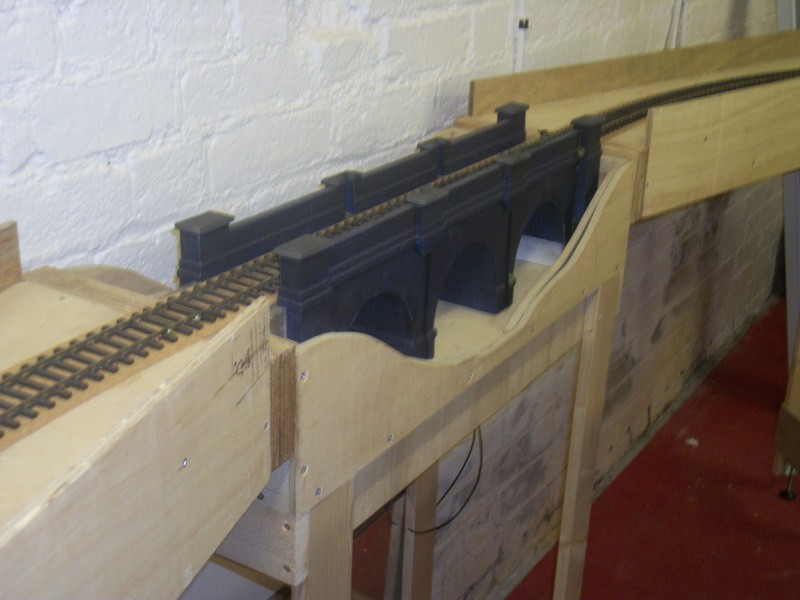
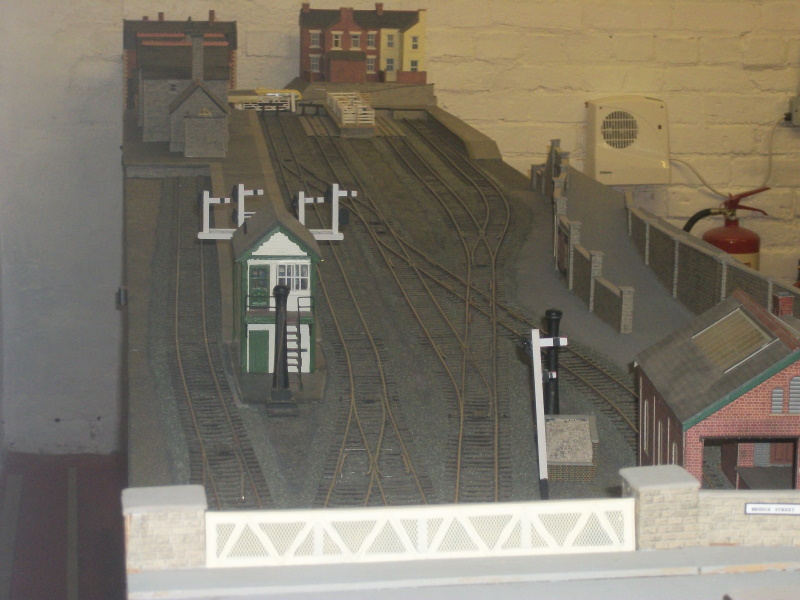
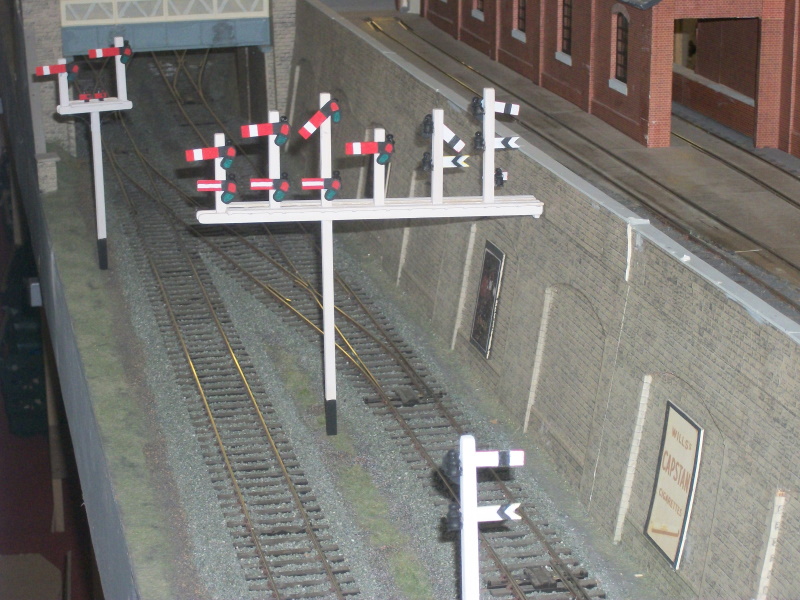
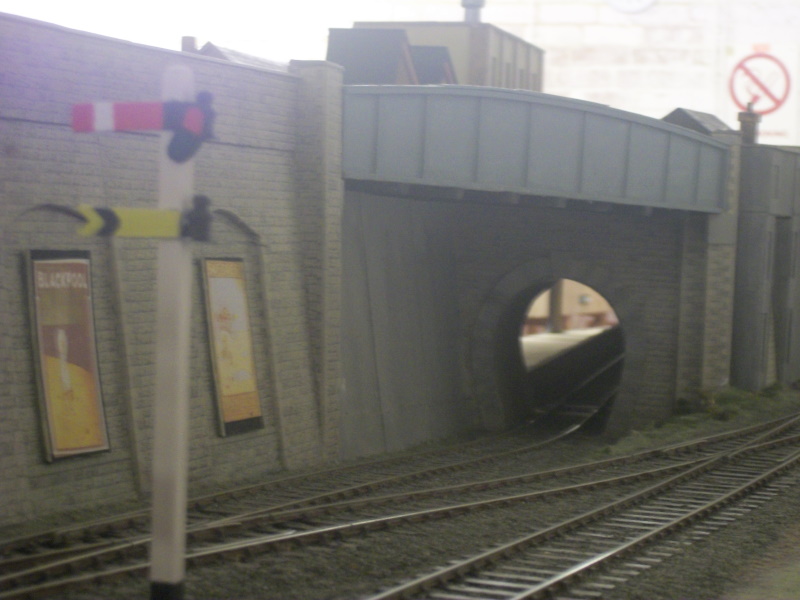
The club had also converted the lean-to beside the barn into a proper room with external walls and doors. This area housed our new permanent test tracks for O, OO and N gauge.
The old OO was to be revamped with greater operational capacity, the isles between the layouts could get quite congested with operators and viewers. We asked if the O gauge could be taken through the wall and the fiddle yard be located above the test track. Removal of the fiddle siding allowed the OO to be moved over and the common isle to be increased.
Further Extensions through the wall 2015
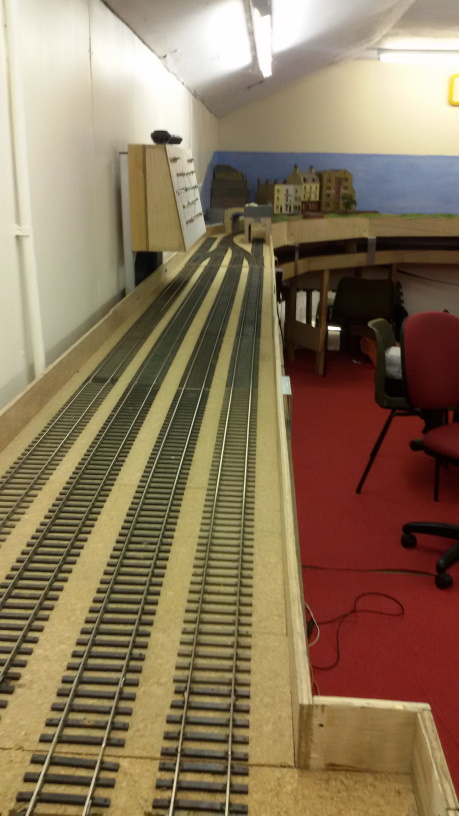
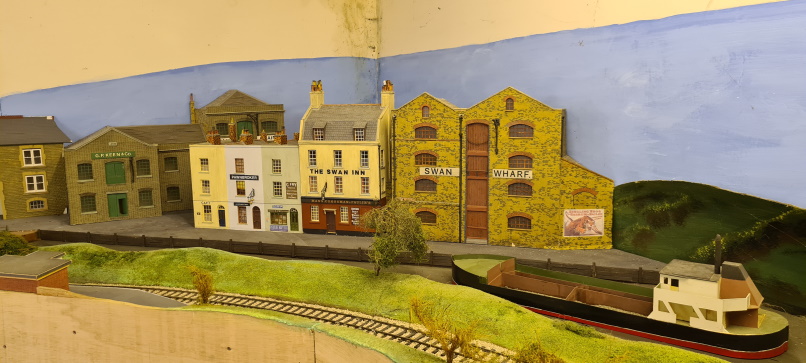
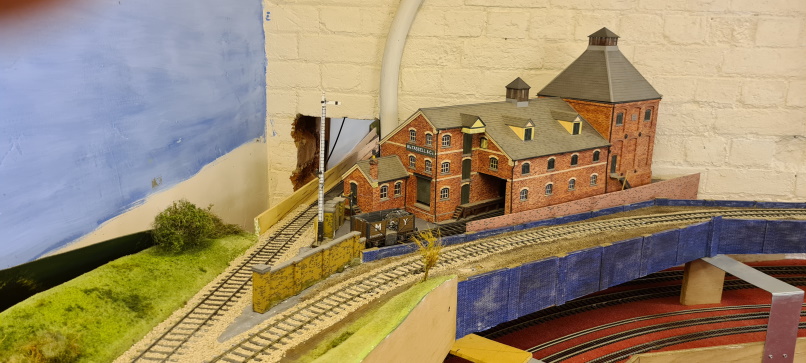

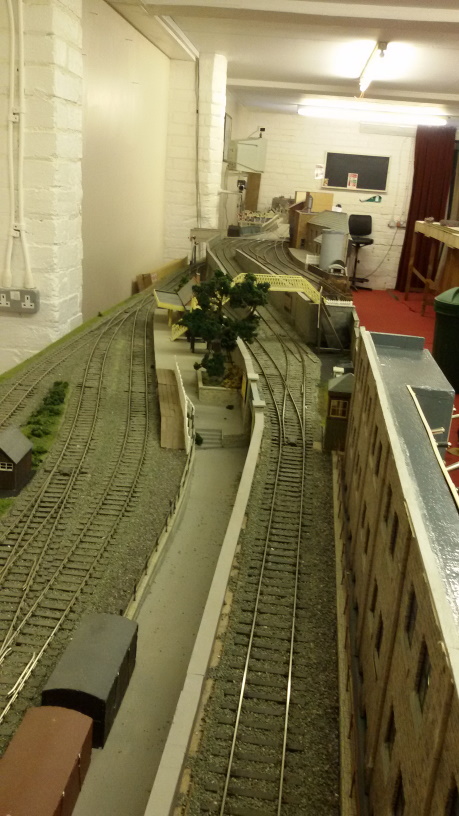
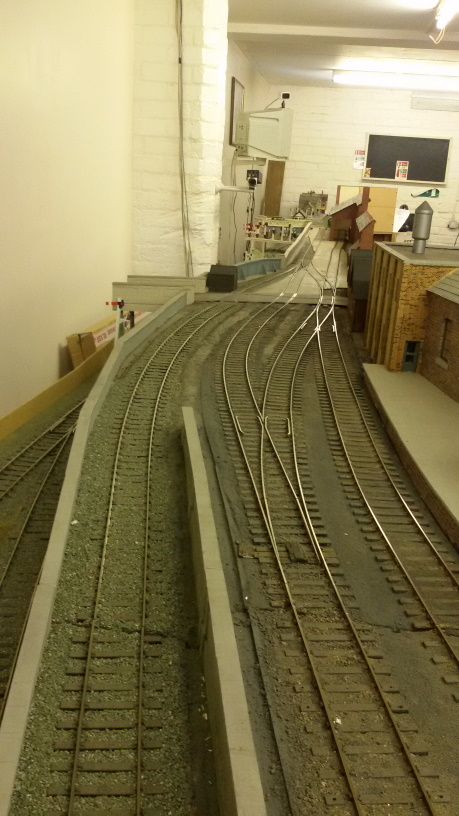
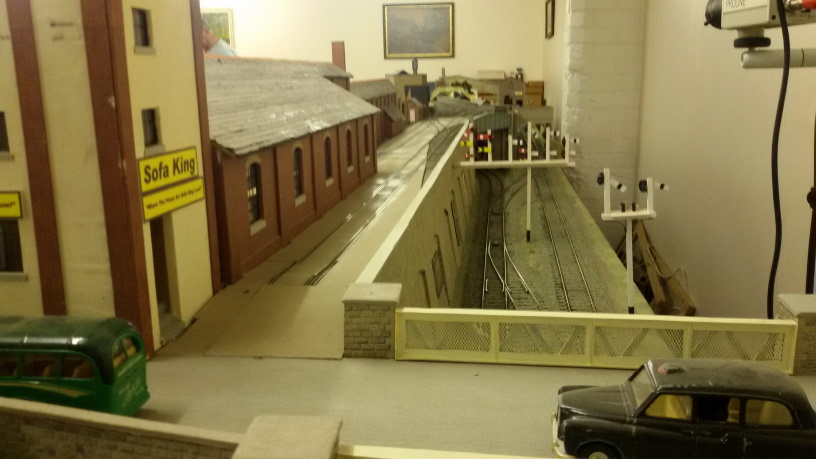
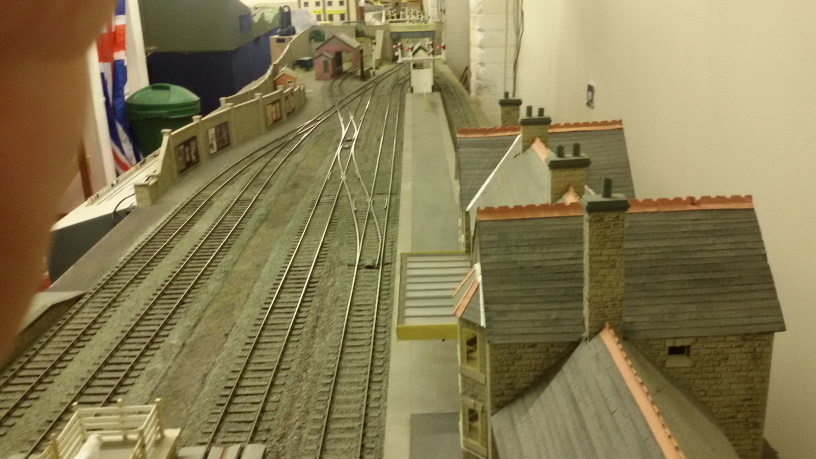
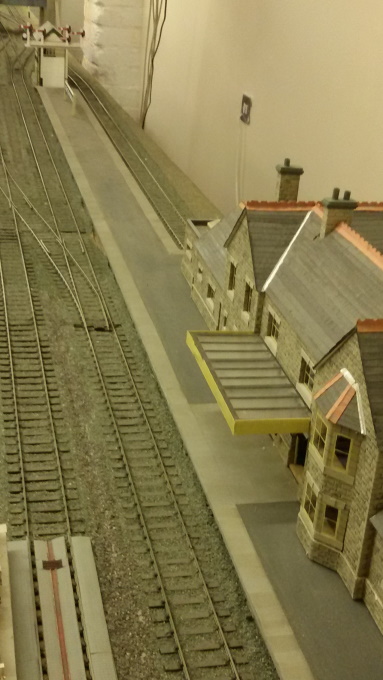
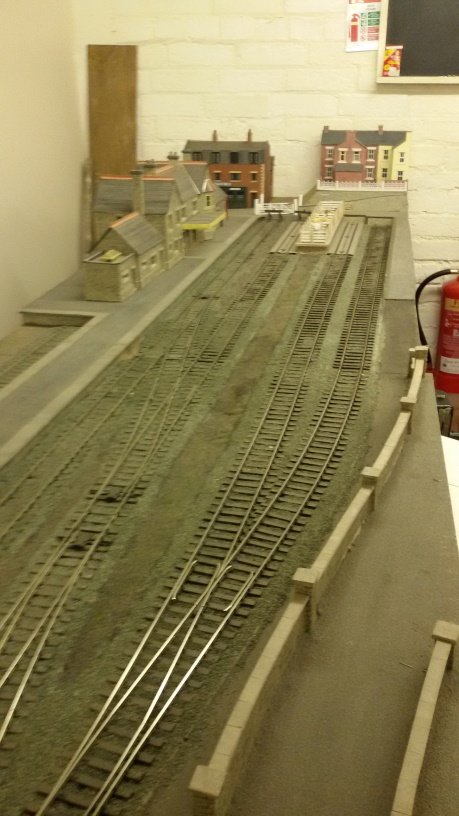
A worthwhile solution, as the layout could again be operated at ease. Unfortunately not everyone was appeased, the viewing side of the layout could not be seen, operators found the trains climbing the link slope difficult to see and communicating with the fiddle siding in the other room impossible. Further solutions were required.
When the layout came back from exhibition, we were asked if the layout could be put back the other way round. This meant the extension would need to be on the opposite end. As the climb up to the the fiddle siding level was at its maximum, to connect with the curves at the station end, we would need to raise the whole layout by 150mm.
Whilst the layout had been dismantled, the whitewashed wall had been drylined and painted, removing the risk of damaged clothing. To connect to the curves, the disused level crossing at the end of the platform was removed and replaced with track and new gates. Operation in the clubroom was now from the fiddle sidings, through the station and into the hidden storage. Whilst this removed the need to reverse all trains in the station, it was now not possible to pass a train from the opposite direction.
The next modification was the installation of a point at the end of the curve to connect to the goods siding. We could now pass a passenger train with a goods train. Another modification came with the introduction of two new inclines connecting the scenic layout with the test track. This gave the test track access to the fiddle sidings and allowed for an extended run for Stacton Magna.
Telephones, Cameras and Monitors overcame the difficulties of communication.
Engine Shed Extension 2018

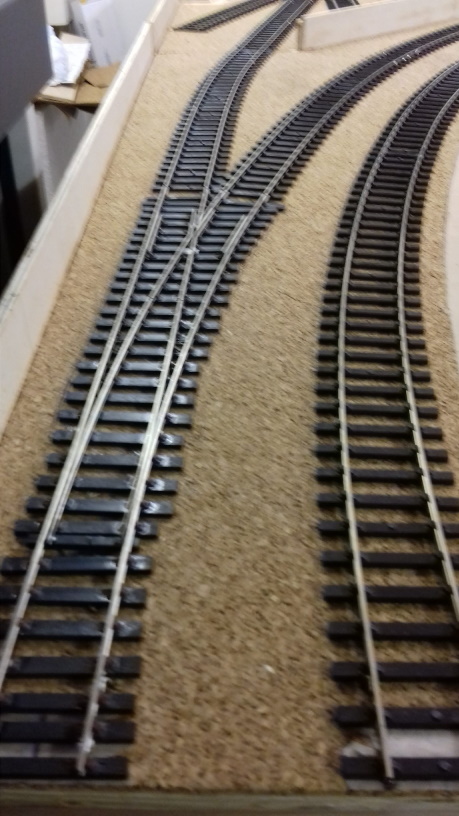
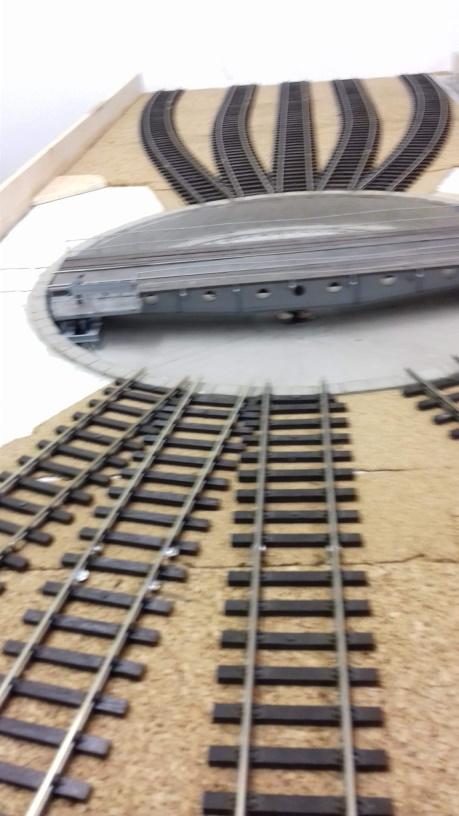
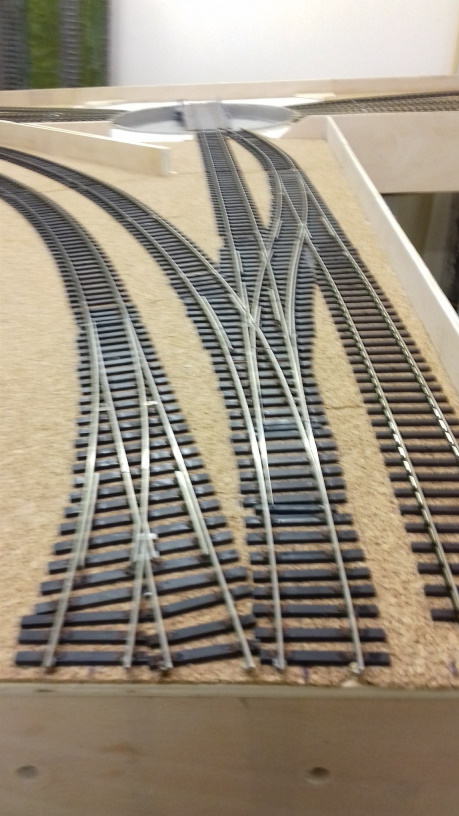
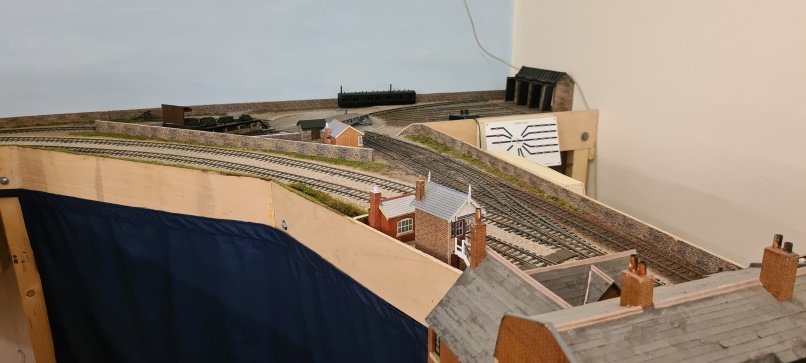
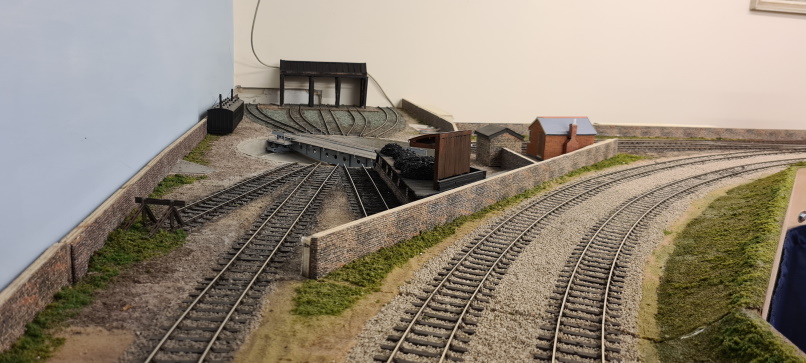
The latest improvement has been the installation of the Engine Shed facility in the corner and the doubling of the station curves. This has yet to be completely finished due to lockdown of the clubrooms because of Covid. We look forward to our return and being able to exploit the new potential.
